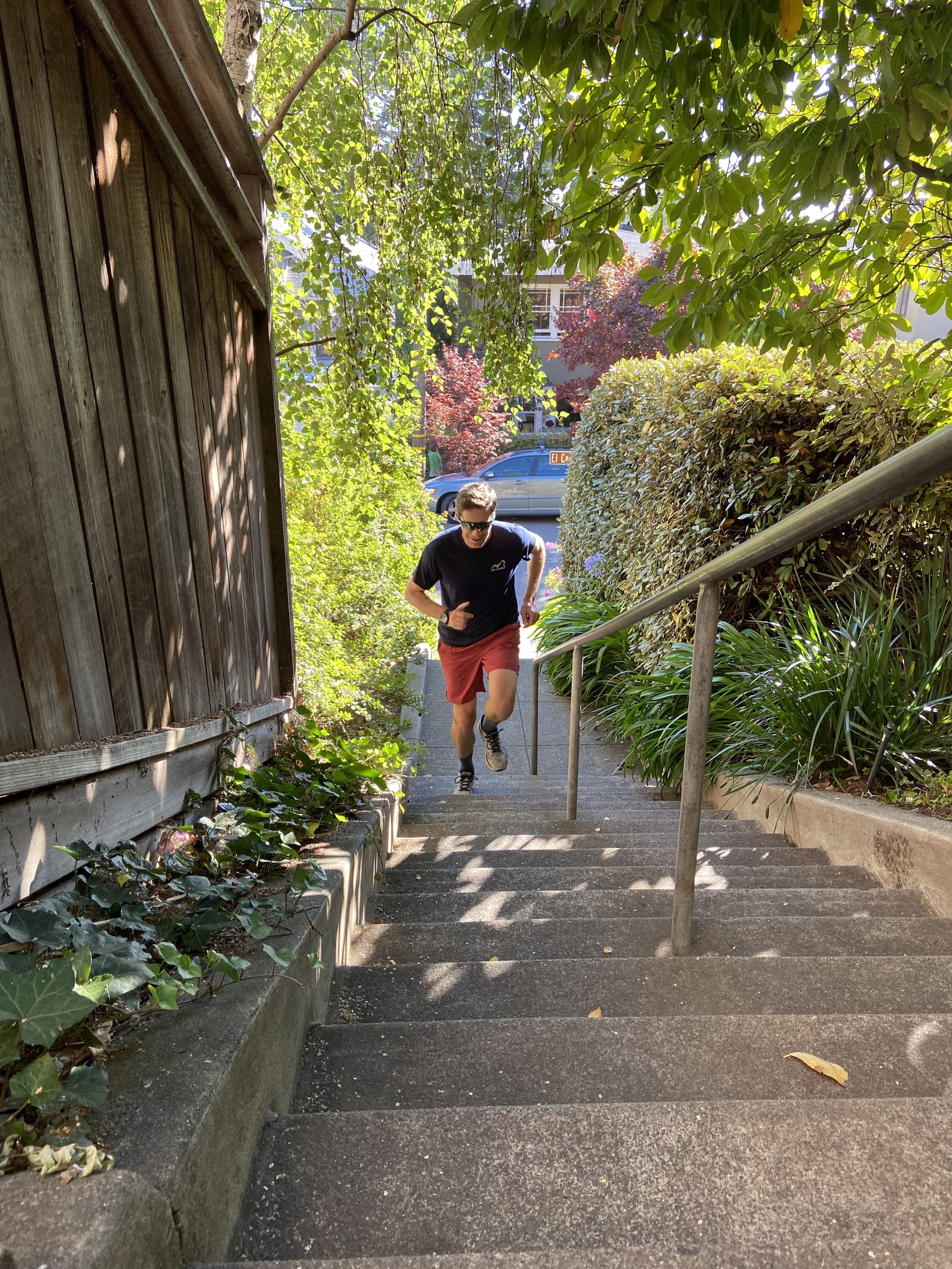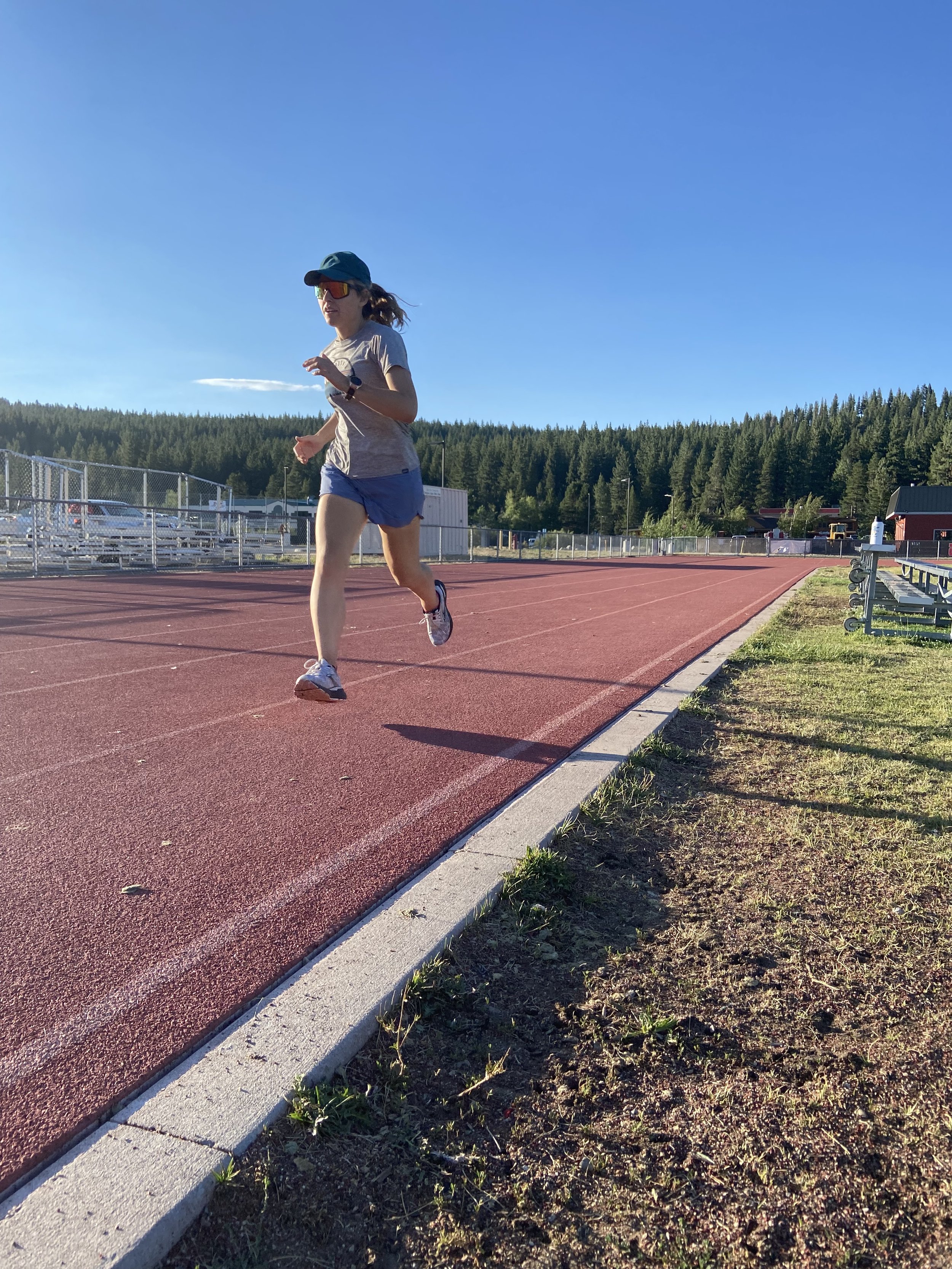3 Benefits of High-Intensity Training—Even if You Don’t Race
Sprinting up a set of stairs is a great way to get some high-intensity in.
One of the first things to go when left to designing our own exercise or training program is high-intensity workouts. We often go a little harder the days that we feel good, and a little easier when we’re tired. Or we don’t get out at all. This model often keeps us fit but unable to make improvements in our fitness.
High-intensity intervals challenge us to get our heartrate up and push through a certain pain threshold. I’m not talking about doing intervals that are the hardest thing you can do. That should be reserved for a couple of times a year. High-intensity intervals should be a workout that is done at least once a week in your training program. Depending on your goals, it might be twice a week. For most people, I’d recommend hitting one high-intensity interval session per week at an effort of 8 or 9 out of 10. In other words, 80% or 90% effort.
Enjoying the mountains thanks to high-intensity intervals.
So, what are the benefits of doing this type of work? If you race, it seems obvious. You want to prepare your body for the physiological and mental challenges of race day. If you don’t race, it’s harder to make the connection. What if you just enjoy biking, running, or skiing as much as you can? Well, there are still some key benefits you get from high-intensity interval work.
1. High-intensity improves our ability to use oxygen, even at lower intensities. One of the things that happens when we go hard is that we start to breathe hard and our heart rate goes up. This is our heart working harder to transport oxygen and blood to our muscles. Without blood and oxygen our muscles would stop firing. By intentionally putting ourselves under stress we improve our body’s ability to transport oxygen to our bodies. Especially at lower intensities. It also makes our body better at handling higher elevations. So, if you live in the mountains or just like to spend fun days in the mountains you should be doing high-intensity intervals.
Skate skiing to new heights and new views with improved fitness.
2. We improve our ability to go for longer when we go short and hard. High-intensity work will improve our anaerobic threshold. This means that we can go for longer at a more efficient heartrate and energy output. Connected to this is our body becomes better at clearing lactic acid when we do high-intensity interval training. Lactic acid is a byproduct of our body using energy to move fast. It is often associated with that heavy feeling in our legs when we try to go hard or fast. But when we do high-intensity training, our bodies become better at handling that lactic acid. The combination of improved anaerobic threshold and improved lactic acid clearance means we can go for longer at a higher pace.
3. Our coordination improves. When we do high-intensity work we start to natural find ways to move faster and push ourselves. The result is that we improve our neuromuscular pathways. This means that our body-brain connection is stronger and we respond better to that jump on a mountain bike or on skis. We’re able to react quicker and safer to external stimulus. As a result, our bodies move better and are less likely to get injured.
Sprinting improves coordination and running economy.
Even if you’re not racing, you can still enjoy these 3 benefits of high-intensity interval training. If you are racing, you should definitely be doing high-intensity intervals to prepare yourself well for any event. I didn’t touch on mental toughness, but that is also a positive impact from interval training. Maybe in a post soon!




